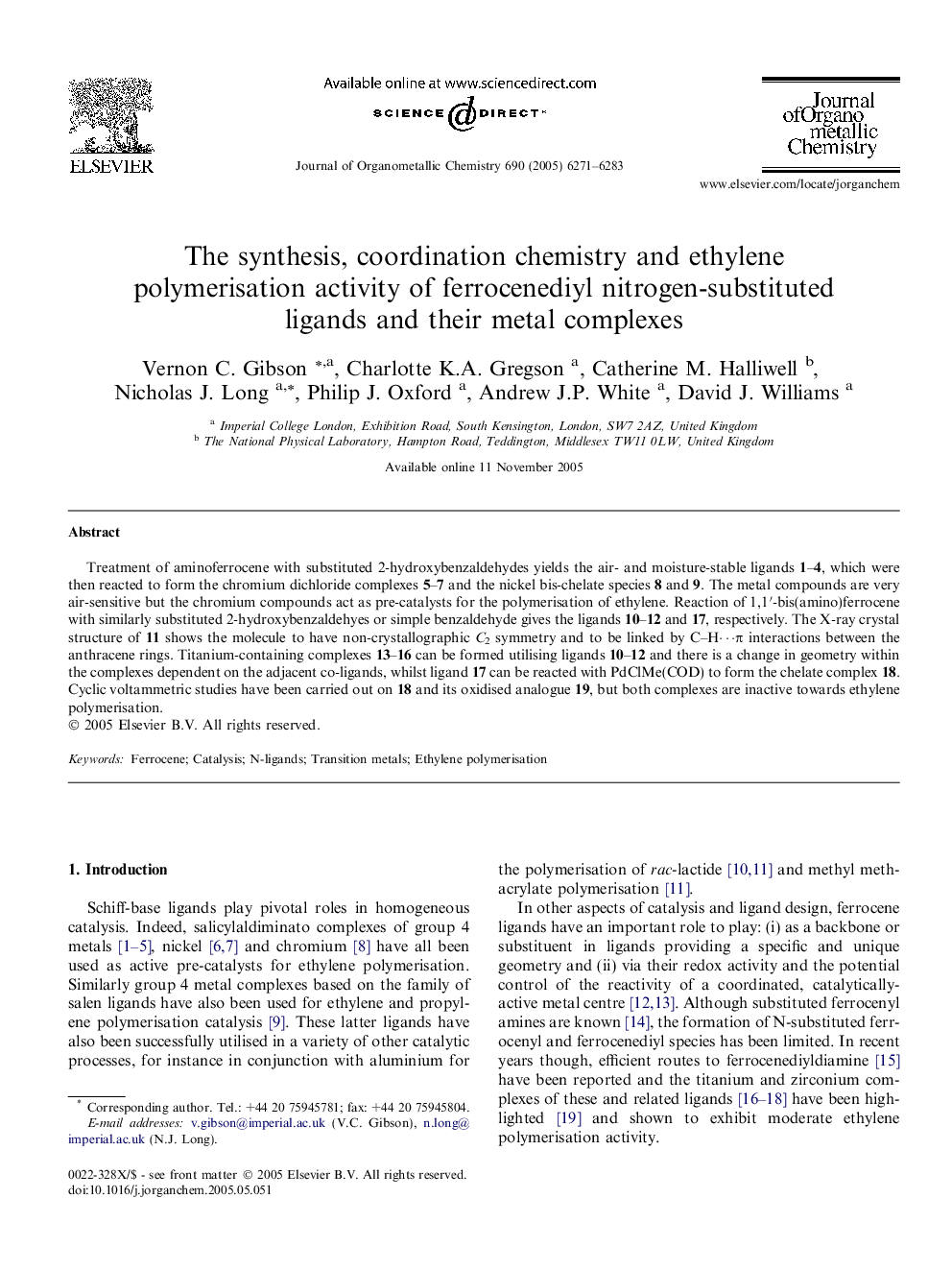| Article ID | Journal | Published Year | Pages | File Type |
|---|---|---|---|---|
| 1328622 | Journal of Organometallic Chemistry | 2005 | 13 Pages |
Treatment of aminoferrocene with substituted 2-hydroxybenzaldehydes yields the air- and moisture-stable ligands 1–4, which were then reacted to form the chromium dichloride complexes 5–7 and the nickel bis-chelate species 8 and 9. The metal compounds are very air-sensitive but the chromium compounds act as pre-catalysts for the polymerisation of ethylene. Reaction of 1,1′-bis(amino)ferrocene with similarly substituted 2-hydroxybenzaldehyes or simple benzaldehyde gives the ligands 10–12 and 17, respectively. The X-ray crystal structure of 11 shows the molecule to have non-crystallographic C2 symmetry and to be linked by C–H⋯π interactions between the anthracene rings. Titanium-containing complexes 13–16 can be formed utilising ligands 10–12 and there is a change in geometry within the complexes dependent on the adjacent co-ligands, whilst ligand 17 can be reacted with PdClMe(COD) to form the chelate complex 18. Cyclic voltammetric studies have been carried out on 18 and its oxidised analogue 19, but both complexes are inactive towards ethylene polymerisation.
Graphical abstractA range of ferrocene-substituted salicylaldimine, salen and bis(imine) ligands has been prepared and characterised. The new ligands have been coordinated to a range of transition metal centres, such as Ni, Cr, Ti and Pd, and some of these complexes possess catalytic activity towards ethylene polymerisation.Figure optionsDownload full-size imageDownload as PowerPoint slide
